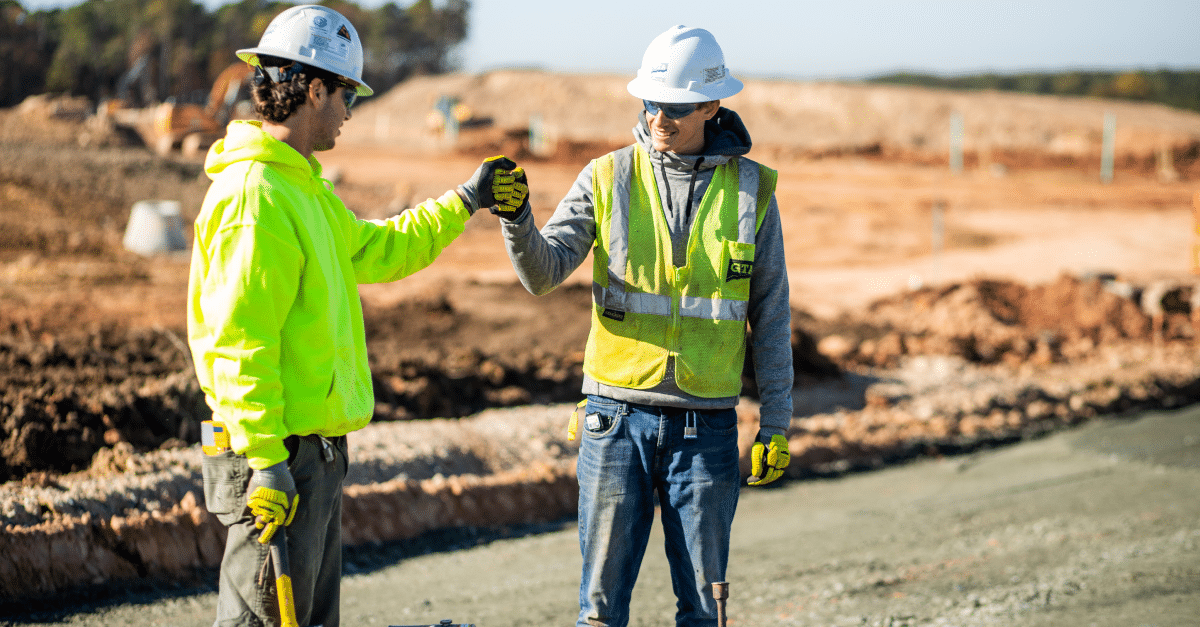Some Known Questions About Geotechnical Engineering For Construction Projects.
Some Known Questions About Geotechnical Engineering For Construction Projects.
Blog Article
The Buzz on Geotechnical Engineering For Construction Projects
Table of ContentsThe Buzz on Geotechnical Engineering For Construction ProjectsThe smart Trick of Geotechnical Engineering For Construction Projects That Nobody is Talking AboutSome Ideas on Geotechnical Engineering For Construction Projects You Need To KnowThe Single Strategy To Use For Geotechnical Engineering For Construction ProjectsThe Best Guide To Geotechnical Engineering For Construction ProjectsGeotechnical Engineering For Construction Projects Things To Know Before You Buy
The function of geotechnical engineering considerably deals with understanding the functions of soil and rock, which may vary substantially by their thickness, moisture content etc. These functions should be analyzed by geotechnical engineers to anticipate their movements under various situations. The safety as well as security of structures are impacted by soil problems, making this evaluation essential., in addition to how they interact with buildings that have been put up on or within them, is one of the primary explanations for why geotechnical design is essential.
Ecological defense is achieved via geotechnical design. Proficiency in air, water, and soil high quality maintenance is put to make use of by geotechnical designers to minimize the unfavorable effects of projects.
To sum up, geotechnical design is a crucial discipline that protects the durability and integrity of civil framework. Geotechnical designers contribute to making structure projects effective all over the world by comprehending the behaviour of earth products and using suitable planning techniques.
Geotechnical Engineering For Construction Projects for Beginners
By taking a look at dirt, rock, and subsurface problems, geotechnical engineers give vital understandings that assist in the design, building, and maintenance of structures and facilities.

8 Easy Facts About Geotechnical Engineering For Construction Projects Described
Research laboratory testing: Establishing the homes of dirt and rock. Area screening: Carrying out examinations on-site to analyze conditions. Evaluation and style: Making use of information to design foundations, preserving wall surfaces, tunnels, and other structures. Numerous top-level building and construction tasks have successfully utilized geotechnical design to ensure their stability and safety. :: The world's tallest building needed a deep understanding of the underlying geology.

As a leader in geotechnical design, BECC Inc. is dedicated to delivering cutting-edge and efficient solutions that fulfill the highest possible requirements of high quality and security., a mechanical designer and geologist.
The Facts About Geotechnical Engineering For Construction Projects Revealed
Terzaghi also established the structure for concepts of bearing capacity of foundations, and the concept for forecast of the rate of settlement of clay layers due to loan consolidation. Afterwards, Maurice Biot completely established the three-dimensional dirt loan consolidation concept, expanding the one-dimensional model previously developed by Terzaghi to much more basic hypotheses and presenting the collection of standard formulas of Poroelasticity.
Geotechnical designers investigate and establish the residential properties of subsurface conditions and materials.
Geotechnical Engineering For Construction Projects Things To Know Before You Get This
Geologic mapping and analysis of geomorphology are normally finished in assessment with a rock hound or design geologist. Subsurface exploration generally includes in-situ testing (for example, the conventional infiltration test and cone infiltration examination). The excavating of test pits and trenching (particularly for finding mistakes and slide airplanes) may likewise be utilized to find out about soil problems at deepness. , which utilizes a thick-walled split spoon sampler, is the most common method to collect disrupted examples.

If the user interface in between the mass and the base of a slope has a complicated geometry, incline stability evaluation Click This Link is tough and numerical solution approaches are needed. Generally, the interface's specific geometry is unidentified, and a streamlined interface geometry is thought. Finite inclines need three-dimensional models to be analyzed, so most slopes are assessed presuming that they are infinitely wide and can be stood for by two-dimensional designs.
Geotechnical Engineering For Construction Projects Can Be Fun For Everyone
The observational method may be referred to as adheres to: General expedition enough to establish the rough nature, pattern, and homes of down payments. Analysis of one of the most potential problems and one of the most negative conceivable inconsistencies. Creating the layout based on a working hypothesis of habits anticipated under the most possible problems. Choice of quantities to be observed as building earnings and computing their expected worths based upon the working hypothesis under the most negative problems.
Measurement of amounts and analysis of real problems. It is improper for jobs whose design can not be modified throughout building.
Report this page